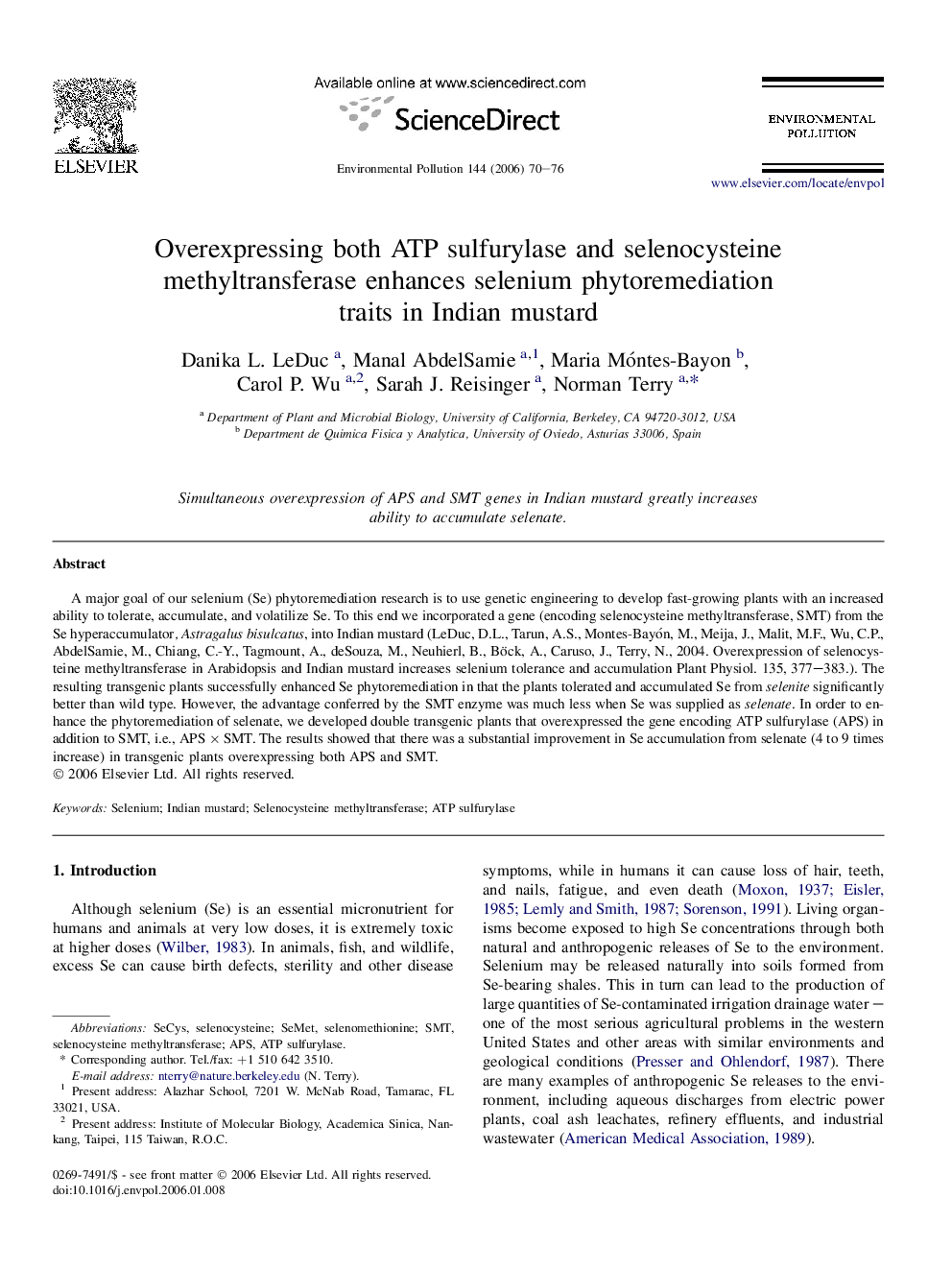| Article ID | Journal | Published Year | Pages | File Type |
|---|---|---|---|---|
| 4427934 | Environmental Pollution | 2006 | 7 Pages |
A major goal of our selenium (Se) phytoremediation research is to use genetic engineering to develop fast-growing plants with an increased ability to tolerate, accumulate, and volatilize Se. To this end we incorporated a gene (encoding selenocysteine methyltransferase, SMT) from the Se hyperaccumulator, Astragalus bisulcatus, into Indian mustard (LeDuc, D.L., Tarun, A.S., Montes-Bayón, M., Meija, J., Malit, M.F., Wu, C.P., AbdelSamie, M., Chiang, C.-Y., Tagmount, A., deSouza, M., Neuhierl, B., Böck, A., Caruso, J., Terry, N., 2004. Overexpression of selenocysteine methyltransferase in Arabidopsis and Indian mustard increases selenium tolerance and accumulation Plant Physiol. 135, 377–383.). The resulting transgenic plants successfully enhanced Se phytoremediation in that the plants tolerated and accumulated Se from selenite significantly better than wild type. However, the advantage conferred by the SMT enzyme was much less when Se was supplied as selenate. In order to enhance the phytoremediation of selenate, we developed double transgenic plants that overexpressed the gene encoding ATP sulfurylase (APS) in addition to SMT, i.e., APS × SMT. The results showed that there was a substantial improvement in Se accumulation from selenate (4 to 9 times increase) in transgenic plants overexpressing both APS and SMT.
